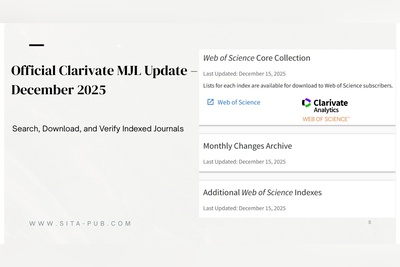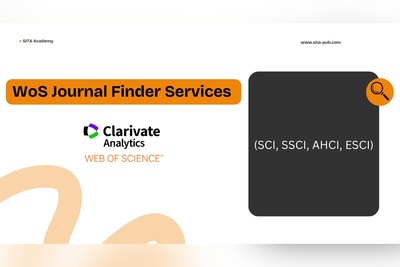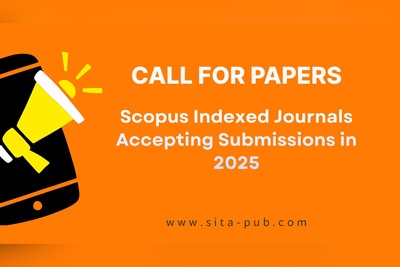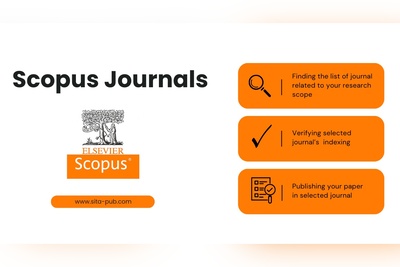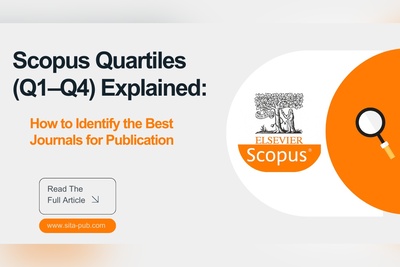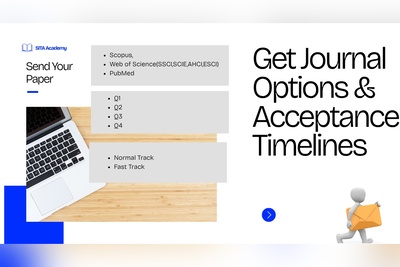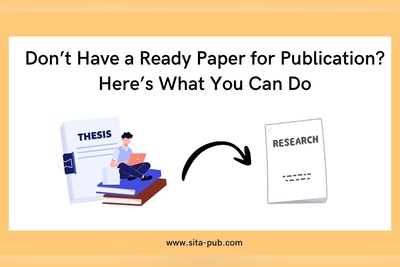Steps to Get Accepted in High-Ranking SCI/SCIE Journals
Every academic aspires to publish their research in internationally recognized SCI and SCIE journals. In this article, we clearly outline the essential steps you need to follow to get acceptance in these high-ranking publications.
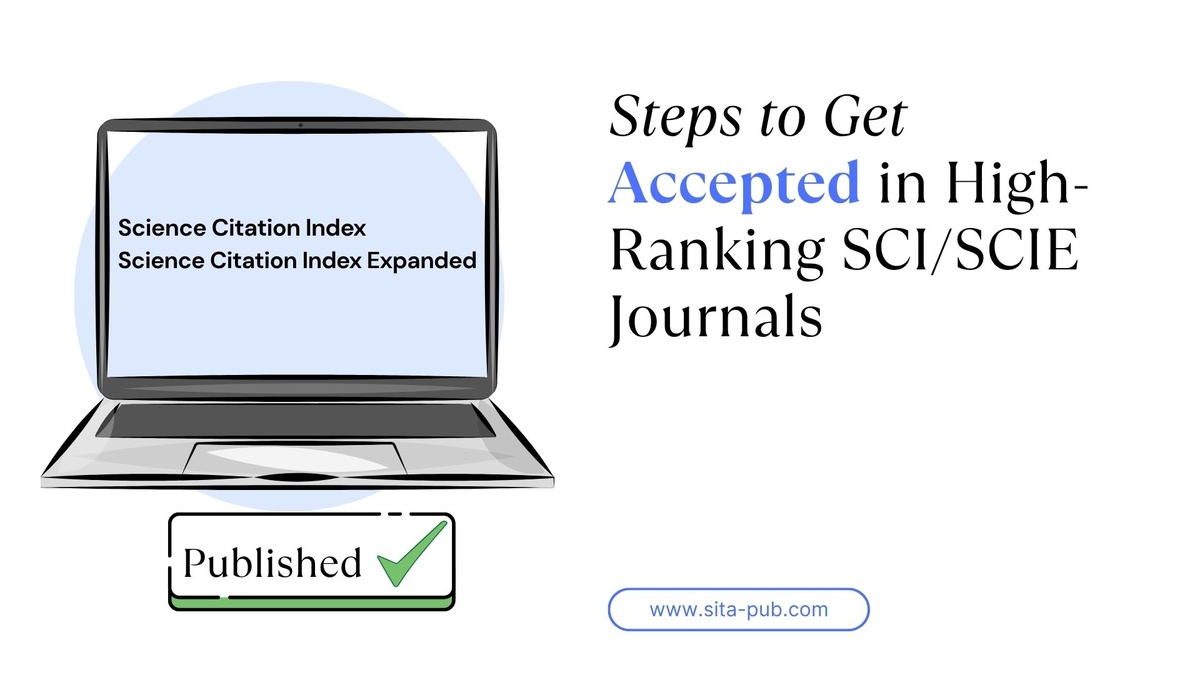
Publishing in ISI-indexed journals—particularly those listed under SCI (Science Citation Index) and SCIE (Science Citation Index Expanded)—is highly respected in the academic world. These journals, such as Nature Communications (SCI) and Scientific Reports (SCIE), are known for their rigorous peer-review standards and global visibility. Whether you're a graduate student, an early-career researcher, or an established academic, having your work accepted in these journals can greatly enhance your professional reputation.
In this article, we’ll explain what ISI journals are, the difference between SCI and SCIE, the steps you should follow to get accepted, and how research centers like SITA Academy can support you with everything from selecting the right journal to final submission.
What Are High-Ranking SCI and SCIE Journals?
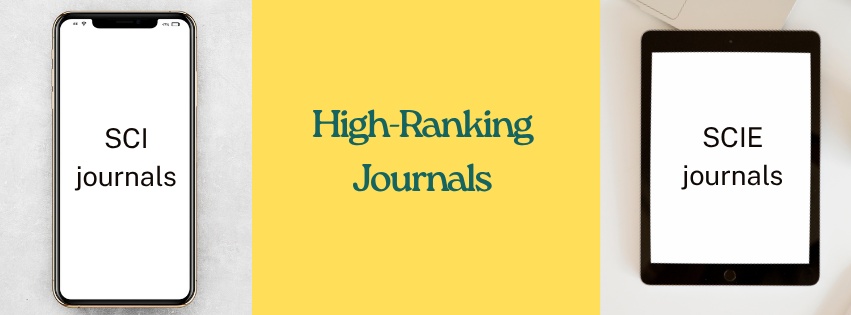
SCI stands for Science Citation Index, and SCIE is the Science Citation Index Expanded. Both are databases maintained by Clarivate Analytics and are part of the Web of Science Core Collection. These indexes include journals with high standards for peer review, editorial quality, and citation impact.
SCI journals are more selective and typically include the top-tier, high-impact journals in the sciences.
SCIE journals are broader in scope and cover more disciplines, including engineering, life sciences, and applied sciences.
High-ranking SCI/SCIE journals are usually those with a high Impact Factor (IF) and are listed in the Q1 or Q2 quartile of their respective disciplines.
Steps to Get Accepted in SCI/SCIE Journals
Publishing in SCI/SCIE journals requires a strategic and careful approach. Here are the key steps you should follow:

1. Choose a Relevant and Impactful Research Topic
Your topic must address a significant gap, propose a novel approach, or offer valuable results in your field. SCI/SCIE journals prioritize originality and relevance, so make sure your research problem is clearly defined and well-justified.
2. Conduct a Thorough Literature Review
A strong literature review shows your understanding of current trends, recent discoveries, and research gaps. It helps position your study and highlights how it contributes to the field.
3. Write a Scientifically Sound and Well-Structured Paper
Scientific quality is non-negotiable. Ensure that your research methodology is robust, results are well-analyzed, and conclusions are evidence-based. A high-quality paper includes:
A compelling abstract
Clear introduction with objectives
Proper methods section
Accurate results with figures and tables
Insightful discussion and conclusions
4. Use Proper Academic Language
Language matters. Many high-quality manuscripts get rejected due to poor grammar, unclear writing, or non-academic tone. If English is not your first language, consider using native English editing services.
5. Select the Right Journal
Do not randomly submit your manuscript. Instead, choose a journal whose scope matches your topic, and which is indexed in SCI or SCIE. Check previous articles to see if your study aligns with their expectations.
6. Format According to Journal Guidelines
Every journal has detailed "Instructions for Authors." Follow them precisely, including referencing style, word count, figure format, and file submission requirements. Improper formatting can lead to desk rejection.
7. Check for Plagiarism
Use trusted plagiarism detection tools like Turnitin or iThenticate to ensure originality. Most SCI/SCIE journals require less than 10–15% similarity.
8. Write a Strong Cover Letter
Your cover letter should briefly describe your study, its significance, and why it's suitable for the journal. Keep it professional and concise.
9. Submit and Be Patient
Once submitted, your paper will go through initial screening, peer review, and possibly several rounds of revision. Be responsive to reviewer comments and ready to revise your manuscript as needed.
Differences Between SCI and SCIE
Feature | SCI | SCIE |
Coverage | More selective, core scientific journals | Broader coverage, includes emerging fields |
Number of Journals | Fewer, top-tier | Larger, more inclusive |
Subject Areas | Mainly pure sciences | Includes applied and interdisciplinary sciences |
Quartile Ranking | Typically Q1-Q2 | Can range from Q1 to Q4 |
While both SCI and SCIE are prestigious, there are a few differences:
For most academic goals, both indexes are highly regarded and count equally for promotion, grants, and international recognition.
What Are the Acceptance Criteria for SCI/SCIE Journals?
Each journal has its specific criteria, but in general, SCI/SCIE journals expect the following:
Originality and novelty in research
Scientific soundness and valid methodology
Significant contribution to the field
Proper data presentation (figures, tables, analysis)
Logical and coherent writing
Adherence to ethical guidelines
Compliance with journal formatting and submission rules

Peer reviewers also assess how well the paper is written, its clarity, and whether the conclusions are supported by the data.
What Can Research Centers Do to Help You?
Let’s be honest—publication in SCI/SCIE journals is never guaranteed. No legitimate organization can or should promise 100% acceptance. However, trusted research centers can significantly improve your chances by supporting everything around the core scientific content.
The only thing you must focus on is the scientific quality of your research. The rest—journal selection, language editing, formatting, and submission—can be taken care of professionally.
SITA Academy | Your Research Publication Partner
SITA Academy is a professional research publication center offering comprehensive support for researchers aiming to publish in SCI/SCIE journals. While we do not guarantee publication, we maximize your chances through quality support at every step.
Our Services Include:
Targeted journal selection based on your research scope and impact goals
Professional English editing by native editors
Translation from Arabic or other languages into academic English
Formatting your paper to match journal guidelines
Plagiarism checking and improvement
Assistance with cover letter and submission
Ongoing communication with journal editors
How SITA Academy Helps You Choose the Right Journal

Send Your Paper Abstract |

Receive Journal List |

Select Your Journal |

Start the Publication Process |
Verified Contact Channels
If you have any questions, inquiries, or would like to learn more about our services, please don't hesitate to reach out to us. Our dedicated team is ready to assist you.
Conclusion
Publishing in high-ranking SCI or SCIE journals is a challenging yet achievable goal. While the path may be rigorous, a well-prepared and well-supported submission stands a much higher chance of success.
Focus on your scientific content, maintain high academic integrity, and let professionals help with the technicalities. With support from a trusted research publication center, you can streamline the process, improve your manuscript, and move closer to your publication goals—without compromising quality or ethics.






